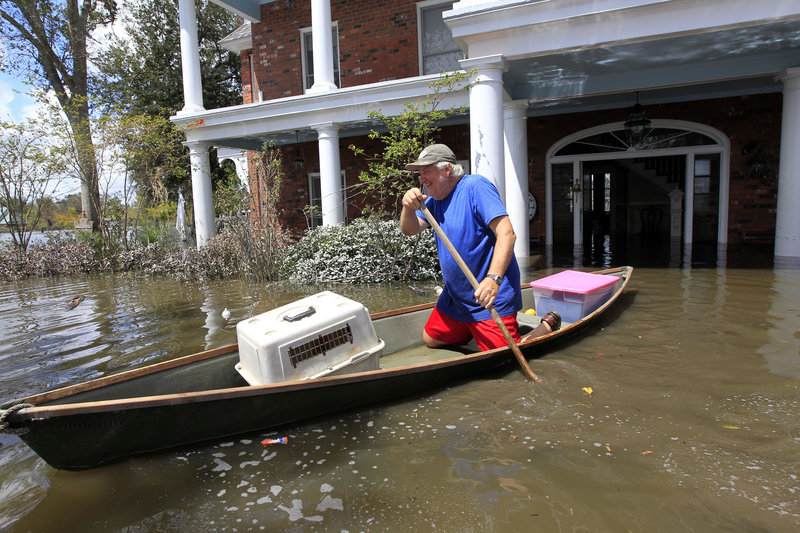NEW ORLEANS – Much of Plaquemines Parish southeast of New Orleans was still covered with floodwater Sunday and more than 200,000 people across Louisiana still had no power, five days after Isaac ravaged the state. Thousands of evacuees remained at shelters or bunked with friends or relatives.
“My family is split up,” said Angela Serpas, from severely flooded Braithwaite. Serpas and her daughter were staying with her in-laws while her husband and son were staying in Belle Chasse, a suburban area of the parish.
“This is the second time we’ve lost our home. We lost it in Katrina,” she said.
At least seven people were killed in the storm in the U.S. — five in Louisiana and two in Mississippi. More than 2,800 people were registered at various state, local and Red Cross shelters in the state, down from around 4,000 earlier. State officials were uncertain how many people would eventually need longer-term temporary housing. Kevin Davis, head of the state’s emergency office, said that housing would likely include hotels at first, then rental homes as close as possible to their damaged property.
President Obama was to visit Louisiana on Monday, a day ahead of the Democratic National Convention. He will meet with local officials, tour storm damage and view response and recovery efforts before addressing reporters at Saint John the Baptist Parish, the White House said. Republican presidential nominee Mitt Romney visited the state Friday. Obama’s homeland security secretary, Janet Napolitano, visited Bay St. Louis, Miss., and Slidell, La., on Sunday.
Progress was evident in many places. Workers continued their return to offshore oil and gas production platforms and drilling rigs, electricity came on for hundreds of thousands of people and the annual Southern Decadence Festival, a gay-pride celebration, carried on in the French Quarter.
In Baton Rouge, thousands of gamblers even gathered for the opening of Louisiana’s newest riverboat casino — an opening that was delayed three days by Isaac.
In the New Orleans area, there were signs of a slow recovery. Workers continued to deal with toppled trees and downed power lines, driving remained hazardous in areas without working traffic lights, and New Orleans opened two cooling shelters so those with no electricity could escape the heat.
Much of Plaquemines Parish, a vulnerable finger of land that juts into the Gulf of Mexico, remained under as much as 5 feet of water, Parish President Billy Nungesser said. The Category 1 hurricane walloped the parish, and for many, the damage was worse than that from Katrina in 2005.
“I’ve never seen water come up this quick this fast,” he said.
Send questions/comments to the editors.



Success. Please wait for the page to reload. If the page does not reload within 5 seconds, please refresh the page.
Enter your email and password to access comments.
Hi, to comment on stories you must . This profile is in addition to your subscription and website login.
Already have a commenting profile? .
Invalid username/password.
Please check your email to confirm and complete your registration.
Only subscribers are eligible to post comments. Please subscribe or login first for digital access. Here’s why.
Use the form below to reset your password. When you've submitted your account email, we will send an email with a reset code.